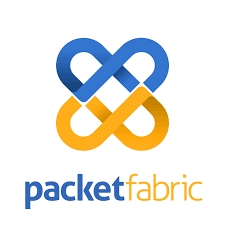
PacketFabric: Building Your Pathway to the Cloud
Network-as-a-Service platform PacketFabric allows for something that didn’t exist just a few years ago: the ability to customize a production friendly network, by combining a combination of physical interfaces, virtual circuits, and long-haul capacity.The user experience is similar to that of turning up compute resources through a cloud provider’s console — instantly provisioned and ready to use within minutes.
Clients can have instant, scalable, and secure connectivity between any two or more points on PacketFabric’s network, with speeds ranging from 50 Mbps to multi-100 Gbps.
Dave Ward, CEO of the Culver City, Calif.-based company, spoke with MESA about the company’s origins, its carrier and cloud-agnostic benefits, and how clients have found its services especially beneficial during the pandemic.
MESA: How did PacketFabric and its network-as-a-service platform first come on the scene, what was the impetus for the company?
Ward: PF was founded five years ago by two women, Jezzibell Gilmore and Anna Claiborne, who saw the need for a disruptive and “on demand” answer to networking, as traditional telcos and ISPs were proving costly, time consuming, analogue and generally outdated. It’s a scalable, automated network-as-a-service model that brings a cloud computing construct to networking and fits elegantly into shorter production timelines, where traditional services or the public internet just can’t compete.
 MESA: Why is it important that PacketFabric’s network is carrier agnostic, and how crucial is it that the company’s services are offered with as much flexibility as possible for clients?
MESA: Why is it important that PacketFabric’s network is carrier agnostic, and how crucial is it that the company’s services are offered with as much flexibility as possible for clients?
Ward: We’re able to bring customers closer together for collaboration and B2B interaction by providing a way to connect and provide huge amounts of guaranteed bandwidth regardless of workflow, application, cloud, vendor, location or service to consume. Access to “the fabric” is possible regardless of which first or last mile service is being used. We’re a virtual middle-mile backbone that can essentially be plugged into any pre-existing service. It’s what we mean by a secure, private internet fabric.
This means anyone can use us, but perhaps more importantly, means we can achieve ubiquity and be accessed from enough locations to result in low latency and nimble hopping between PoPs and regions.
MESA: AWS, Azure, Google, IBM … PacketFabric offers cloud connectivity to every major cloud player in the market. What benefits has the company realized by offering a single port to reach multiple cloud providers?
Ward: The answer has to do with multi-cloud production. Not only do different companies in M&E use different CSPs and services from one another, but they often vary even within the same company. A VFX company, for example, might use a hybrid cloud solution. PacketFabric allows up and downstream workflows to be accessed in an automated way from the same network, regardless of region or CSP. We are agnostic to which public cloud, which color or data center or application cloud; we connect to them all and have a frictionless way to create a fabric between them for creatives and other users.
MESA: What makes PacketFabric’s web portal and API user-friendly, how do they stand out when helping clients manage networking services, gain-real time insights into network performance data, etc.?
Ward: One of the most unique things we offer is a portal which customers can access. It allows spinning up of connections within minutes or seconds, and insights into those connections and network telemetry data. APIs give the customer full autonomy to integrate their custom network with any workflow. The key here is really integration into workflows and solutions via the API; no need for humans to click buttons, type anything or even interact with the network!
Really new for the industry is that we are real-time and on-demand. That means we can add, subtract links or increase or decrease bandwidth programmatically with need.
MESA: What are some of PacketFabric’s favorite use case stories in the media and entertainment space, and why?
 Ward: We’re seeing some really exciting VFX rendering use cases — since COVID-19 boosted animation and the need for more VFX in upstream workflows like crowd scenes and previz, there’s just more to render. All variations on that theme of different artists needing to “do their job” in the cloud is on the rise. From storyboarding to VFX to color correction; it’s not why do it in the cloud, it’s all about “get it done easily.” Therefore, the difference between costs of keeping it all on premise vs moving it to the cloud is just too significant to ignore. Not to mention that, in this remote age, the cloud makes the work accessible to everyone, everywhere.
Ward: We’re seeing some really exciting VFX rendering use cases — since COVID-19 boosted animation and the need for more VFX in upstream workflows like crowd scenes and previz, there’s just more to render. All variations on that theme of different artists needing to “do their job” in the cloud is on the rise. From storyboarding to VFX to color correction; it’s not why do it in the cloud, it’s all about “get it done easily.” Therefore, the difference between costs of keeping it all on premise vs moving it to the cloud is just too significant to ignore. Not to mention that, in this remote age, the cloud makes the work accessible to everyone, everywhere.
Our goal, make it easy, secure and frictionless for creatives to do their work. It may be a bit odd to hear a bunch of techies saying their goal is to hide all the complexity of the tech but, that’s truly our goal through our platform. Creatives should focus on their art and we focus on delivering an internet that you can actually program to do what you want and need it to do.
MESA: What’s next for PacketFabric, what advances can we look forward from you next?
Ward: Since we offer something of a newer model, We foresee partnering with some giants in the M&E space who can pass the benefits of our service down to their customers. We also are looking to work directly with studios that want to move to a cloud production and distribution model. Bandwidth and connectivity to cloud on-demand is a game changer for them. And as the industry continues to be inclined towards multi cloud depending on the service or workflow, our automated ability to switch nimbly between providers or create multi-cloud workflows will only become more nimble in the coming year.
Media and entertainment doesn’t have to slow its acceleration or wait for the internet to catch up — we’re ready to meet and support them where they are so they can focus on telling the best stories.
A new PacketFabric white paper — “Connectivity, the Cloud and the Creative Process” is available, waving together frank and valuable input directly from creative professionals and media and entertainment executives around workflows in the cloud. As pain points and priorities are defined, the paper outlines the Network-as-a-Service model, and the many ways in which it provides a clear solution to the connectivity needs of storytellers throughout the production pipeline, from development to distribution.
